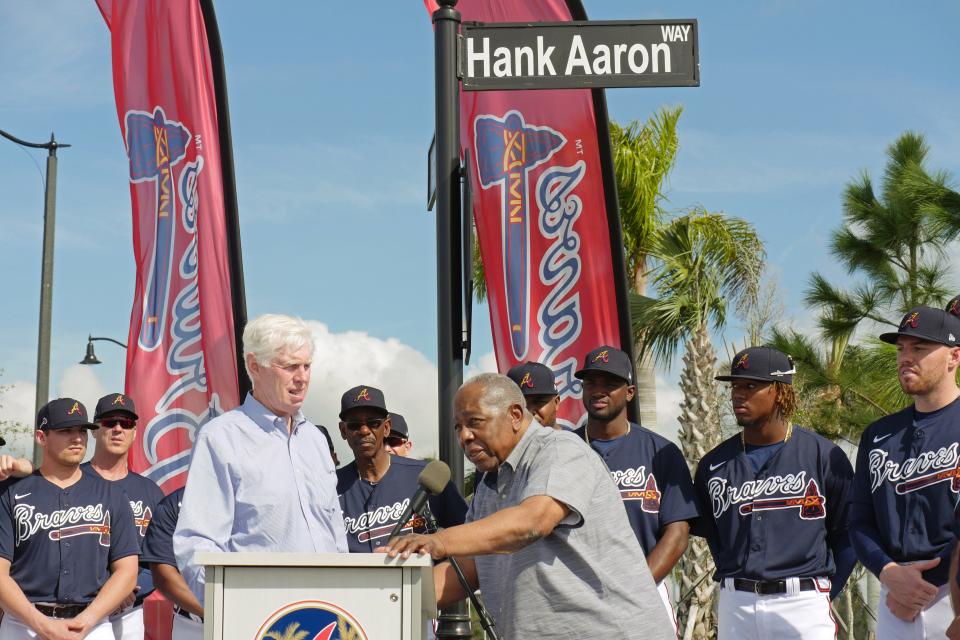Opinion: In celebrating baseball in Bradenton, remember the blemishes too

Spring training baseball is nothing if not overly romanticized. It can even turn government proclamations into poems full of crack-of-the-bat clichés.
At the Manatee County Commission meeting Tuesday, a century of baseball in Bradenton was recognized, and officials gushed over our connection to the game and its glory as it dates back to 1923. To be fair, it's a common sentiment shared by many, or at least until the seventh inning when they stop serving beer.
From Dizzy Dean, to Roberto Clemente, to Willie Stargell, to McKechnie Field, Bradenton is indeed fortunate to have such a longstanding relationship with baseball, in particular the Pittsburgh Pirates, as it enhances the city's visibility and economy.
But if you are only going to recognize Hall of Famers and World Series champions, and wax poetic about fresh-cut grass and men running bases the color of clouds, you are doing history a disservice.
In particular, Black History.
During Black History Month.
There was once a time when spring training baseball in Bradenton – as it was everywhere in Florida – was segregated. It was as black and white as a newspaper boxscore.
Think of it this way: The Manatee County Commission recently raised the possibility of reinstalling a Confederate monument to the courthouse. The reason they gave? To remember the mistakes of the past. When it comes to baseball, it should be the same thing.

Hank Aaron, the man who broke Babe Ruth's record for career home runs, was one of those great players who trained in Bradenton.
When Aaron played for the Milwaukee Braves, he spent his springs living at at 211 Ninth Ave. W., a five-bedroom duplex next door to a funeral parlor, with the other Black players.
The Associated Press has described the house as being in the “dilapidated Negro section of Bradenton."
No More McKechnie:McKechnie Field in Bradenton is now LECOM Park
The All-Time TeamSarasota-Bradenton All Spring Training team
The Legend of Hank AaronUntangling the fable surrounding a Hank Aaron home run
The house was owned by K.W. Gibson, a school principal in Bradenton, and his wife Lulu. Aaron spoke of players sleeping in the hallways and racing to the bathroom each morning for hot water.
The white players, meanwhile, stayed at the opulent Dixie Grande Hotel in downtown Bradenton.
The Associated Press described the hotel as having "glistening glass and stone, wall-to-wall carpeting, private baths, television sets and a modern central dining area."
Milwaukee Braves stars such as Warren Spahn and Eddie Mathews even owned cottages on Anna Maria Island, where they would live during springs. Those homes still stand today.
Aaron was one of the first to speak out against segregated living arrangements, and in a way, he saved spring training in Florida. Owners were considering moving to California and Arizona if things didn't change.
By 1961, they did, as the entire Braves team moved into the Twilight Motel in north Palmetto. That was believed to be the first time a team was integrated for spring training, though players were fed in separate dining rooms so visitors would not see them together.
Many people pass the motel each day on the way to the Skyway Bridge and have no clue of its history. It is called the Little Palm Inn today.
A lot of progress has been made since then, though not nearly enough.
Consider this. Also on Tuesday, the Manatee County Commission finally got around to recognizing February as Black History Month.
The month began two weeks ago.

This article originally appeared on Sarasota Herald-Tribune: Despite Hank Aaron, spring training in Bradenton wasn't always poetic

 money
money 